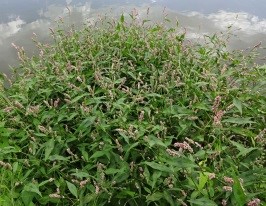Area
Grows in moist soils, stream banks, gardens and melons. Mainly in Ukraine, Belarus, Moldova, the European part of Russia, the Caucasus, the southern regions of Siberia. Occurs in the Far East and Central Asia. When the plant blooms, its upper part is cut to a length of 40 cm and the shade is dried in the ground.
Botanical description of the plant
Peach toron -Polygonum persicaria L .; belongs to the family Polygonaceae. An annual herbaceous plant, reaching 20-50 cm in height. The stem is erect, articulated, the lower part is ascending and branched. The leaves are simple, lanceolate, straight-edged, with reddish-brown spots, arranged in a row with a short band at the base. The flowers are gathered in clusters. The fruit is a black, ovoid nut. It blooms from July to autumn.

Medicinal properties
vitamin K, 1.5% tannin, gallic acid, 0.05% essential oil, flavonoids (gnperoside, persicari, avicularin and quercitrin), organic acids, polysaccharides and there will be other compounds. Medicinal products of the product are used in constipation (atonic and spastic constipation) as an expectorant and as a hemostatic agent to stop uterine and hemorrhoidal bleeding. Drugs in the form of drops.
Growing technology
Peach leafy toron seeds are sown in the soil from early September or mid-December. The soil does not pick up. Irrigation is carried out in moderation. But not often. Fertilizers are applied 2 times a year (spring and summer, mainly complex mineral fertilizers are used. Propagated by seeds. The technology of growing peach-leaf toron plant is carried out in the same way as the technology of growing lawn. Row spacing is 25-30 cm. It takes some time for the seeds to germinate. 1 month before sowing, the soil is dug deep and the surface is leveled. For some time, weeds appear on the ground and are destroyed by pesticides. Sowing of toron seeds is carried out 2 weeks after chemical treatment. 10-12 g of seeds are used per 1 sq. M, -1 kg per 100 sq. M.





